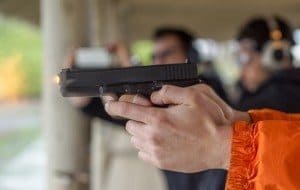
Source: Flickr.
With the current state of the world today, it is understandable that many people are thinking about becoming first-time gun owners. Others might be considering an upgrade to their current number of firearms as well. Defensive technologies, such as bulletproof backpacks, have also risen in popularity. The fact is that when you own a gun, you must focus on bearing arms responsibly to counter those who are being irresponsible.
What does it mean to bear arms responsibly? We can break that idea into 5 distinct categories.
- Avoiding common mistakes made by first-time gun owners.
- Storing your firearm in a responsible way.
- Being trained in the specifics of what your preferred firearm can do.
- Concealed carry and if it’s right for you.
- The importance of personal protective equipment.
This handbook will take you through each category so that you can have confidence in your ability to keep and bear arms. Since 2008 when the Supreme Court ruled that the Second Amendment’s right to own a gun applies to most citizens, there has been a sharp increase in the number of firearms purchased. In the US, there are more than 90 firearms per 100 people.
When you own a gun or pick one up to use it, you’re assuming certain responsibilities, whether they are written down or not. Let’s take a look at these 5 key areas in greater detail so that you can have fun while using a gun – yet still show responsibility while doing so.
The 5 Biggest Mistakes Gun Owners Make
It can be exciting to purchase a firearm. It can also feel like an overwhelming process with the number of choices that are available at your average gun store or gun show. When people feel overwhelmed, they tend to take shortcuts as they shop so they can just “get it over with” and bring their firearm home. When that happens, mistakes happen.
Here are the 5 biggest mistakes that gun owners tend to make, especially when we’re talking about the first firearm someone has ever owned.
- Using the wrong caliber. There are numerous YouTube videos showing people firing a .50 caliber handgun for the first time. It makes people laugh because the gun literally kicks back so far that it hits them in the face. What would happen if a second trigger pull happened as the gun kicks back? Not so funny anymore. Most folks shop for a gun that is either under- or over-powered – look for something like a 9mm for home defense or a .22 caliber for practice shooting.
- Paying more than necessary. You don’t have to purchase the most expensive gun in the shop. You also don’t have to purchase a specific brand name of firearm. As long as you know what kind of gun you need and what features you want, there’s a good chance that you can find something on the bargain rack that will meet your needs.
- Assuming you know what you’re doing. Guns aren’t just something you can point and fire. You need to be trained in order to properly use the firearm. You need to know how to store it properly and what steps are necessary to properly clean the gun. Training helps you to avoid an unfortunate accident and when you purchase a weapon like this, you must have the right mindset in order to avoid the errors that other gun owners have already experienced.
- Purchasing the wrong ammunition. Just because the ammunition works with your caliber of firearm doesn’t mean it’s the right ammunition for the job. If your firearm is for defensive purposes only, then hollow-point ammunition is one of your better options. Slugs are generally good for hunting. High end ammunition doesn’t generally work well with antique weaponry. Know your firearm and you’ll know the ammunition you need.
- Not properly maintaining the firearm. You don’t have to enjoy cleaning your firearm, but you’ve got to make sure you know how to do it. You must also know how the components of the firearm fit together so you can properly detail your weapon from time to time. The biggest error here is that too much oil tends to be used. Remember: a firearm is built to function.
How to Properly Store a Gun
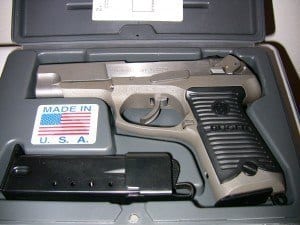
Source: Flickr.
Safe storage is important when you own a gun. Having kids be able to access a firearm is not a good situation. Would you let kids play with matches around flammable liquids? Of course not. Your firearm should be treated the same way as you would keep your car keys away from a teenager who hasn’t learned to responsibly drive yet.
People are naturally curious about guns. Kids are especially interested in them, but they also have the innocence of not knowing what this weapon can do. You might even need to protect your weapons from the local criminal element who might want them. Here are the best options available to you today to help you properly store a gun safely.
- Gun Safes
You’ll find that gun safes come in many different shapes and sizes. Some are designed to fit under your bed, while others are designed to be built into a wall. Simple handgun safes that are designed to be portable can often be found online for $50 or less, but they are generally locked with either a key or a combination lock. Adding biometric locks to a gun safe will usually double the price.
- Trigger Locks
If a gun safe isn’t available for whatever reason, then a trigger lock is a safe and effective way of disabling a firearm. Most gun manufacturers have at least one trigger lock that will work. If you can’t find a trigger lock, then look for one that will keep your firearm in the open position so that it cannot be used. The downfall of this storage method is that anyone can pick up or steal the gun, but the lock must be removed before it can be used. Many guns today come with at least a trigger lock when you purchase them new.
- Render Your Gun Unusable
If you think that someone may be able to defeat your gun safe or your trigger lock, you can take an extra step or two to render your gun unusable while it is being stored. Taking the bolt out of the firearm and storing it separately is rather effective, as is taking the cylinder out. You can also use a basic padlock in addition to a trigger lock or open lock to make it even more difficult to access the firearm. In a pinch, you can even completely disassemble the firearm and store the pieces in different locations.
- Keep Ammo Separate
If no one has access to your ammunition, then the gun is about as useful as a rock. Remember that even if one round is left in the chamber, the gun is loaded and therefore dangerous. Even if you’ve stored it in a gun safe, a loaded firearm still has the potential of causing damage through an accidental discharge.
It is also important to check on the gun storage laws that govern your jurisdiction. Some states and communities have specific laws about how you must secure and transport your firearms. If a law enforcement official believes you have violated these laws, it is a reasonable enough suspicion to allow for a pullover if you’re in your vehicle. Improper storage that causes injury or worse can also make you personally liable for damages.
Always maintain control of your firearm, especially if it is loaded. Safe storage is the best way to make sure you keep that control when the gun is not needed. Consider these options and then choose the ones that make the most sense for your current needs.
The Basics of Firearm Training
The only safe way to use a firearm is to have the knowledge and skills necessary to operate it. In order for that to happen, time on the range with your firearm must occur. Unfortunately firearm training is often not considered until the purchase of the gun has been completed. If you’re thinking about purchasing a gun right now, then here are some good rules to follow to make sure you are safely handling it.
- Always keep the muzzle of the firearm pointed away from people. If you don’t know whether a gun is loaded or not, always assume that it is. When the muzzle of a firearm is pointed at someone, that is where the fired ammunition will go. This means the potential of causing an injury can be particularly high.
- Make sure a firearm is unloaded when being stored. The only time a gun should be loaded is when you intended to use it. Some concealed carry gun owners will carry a loaded gun in the anticipation that they will need to use their weapon and this is also acceptable. If you leave a firearm on your nightstand or keep one under your pillow at night and you leave it loaded, however, that would be considered unacceptable.
- Don’t bank on your gun’s safety actually working. Just because the safety on your gun is engaged doesn’t mean that it will actually work. Most people today are familiar enough with guns to understand how to disengage the safety so that it can be used. Having the gun remain unloaded is a far more secure option.
- Know what is beyond your target. You might be aiming at a specific target, but what happens if your fired rounds go through that target? Or what if you have a hair trigger that shoots a second round upwards during the recoil? Always know what is behind your target so that you don’t accidentally injure someone or something.
- Use the correct ammunition. This means using the right caliber of ammo and the right design for your current purpose.
- Don’t look in the muzzle of a gun after a misfire. A gun that has jammed or misfired is a gun that can expel a round at any given time. Handle this situation with care and make certain that no one, including yourself, is within the danger zone of the gun should the round fire out.
- Wear personal protective equipment when shooting. This includes clothing that is suitable for the environment, eye protection, and hearing protection.
- Make sure your gun has no obstructions. A thorough inspection of your firearm is necessary before firing it. In particular you will want to make sure that your barrel is free of any blockages before shooting. Never assume that a gun is free of obstructions, even if it has been properly stored away.
- Have your firearm serviced regularly. You may also wish to consider avoiding needless modifications to the weapon. Regular maintenance will help to keep your firearm operating as it should. Modifications can cause changes to how the gun operates, so only make them if you are certain about what you are doing.
- Get to know your weapon. You must learn both the handling characteristics of your firearm and its mechanical characteristics. Even the same make and model of firearm is going to operate a little differently from gun to gun. There’s a reason why many gun owners give their weapons a name – it’s an easy way to begin forming the needed relationship to keep everyone safe.
Hunter safety classes, concealed carry classes, and other training classes are available to help you become more familiar with your preferred firearm. With the right training and by consistently getting the basics right, using a gun can be just as safe as any other hobby. Stress safety at all times and you’ll be bearing arms responsibly.
How to Determine if Concealed Carry Is Right for You
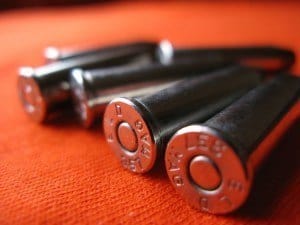
Source: Flickr.
Millions of gun owners are applying for concealed carry permits every year. Depending on where you live, you may need to fill out a city or state application – and sometimes both – to legally carry a firearm with you that is concealed in public. You must agree to a criminal history background check and will likely need to be fingerprinted as part of the application process.
There are also certain restrictions that might be in place.
- You will likely need to be 21 years old at minimum and a resident of your state or city.
- Provide evidence of a concealed carry permit that has already been approved in another jurisdiction.
- Be either a citizen of the United States or a permanent resident with an approved green card.
- Meet all legal standards that are in place, which may mean having zero domestic violence incidents on your record or no felony convictions.
- The ability to safely use the firearm of choice and potentially demonstrate your skills in front of a law enforcement officer or approval panel.
If you can meet those requirements and any other specific issues that your local jurisdiction may have, then you qualify for a concealed carry permit. Before you get started on the paperwork, you may want to ask yourself some specific questions about why you want to have a concealed carry permit in the first place.
What is the purpose of me having a concealed carry permit? Many people want a CCP because they want to protect themselves and their family. If your goal is simply to carry a gun with you wherever you go because it’s fun, it’s cool, or it just seems like a good thing to do, you might want to give this some more thought.
What will I do when I get angry? When people get angry, their logical reasoning centers decrease. In basic terms, when you get angry, you become stupid. Your basic instincts begin to operate. If you tend to be an aggressive person when angry, then having a concealed firearm at your disposal could be a bad thing.
How will I respond to people who see my gun? Most people will steer clear of those that they know are carrying a firearm. Because it can be such a deadly weapon, the sight of a gun can make many people nervous. You might see it as a tool, but someone else might see you as a potential murderer. It happens. If that happens to you, how do you think you would respond? If you’d be confrontational, then now might not be the best time for a permit.
Can I afford the application process? In Washington State, you must have a concealed carry permit even if all you do is keep a firearm locked in your glove box. As of 2016, you must pay a fee of $52.50 for a 5 year permit and then pay a renewal fee of $32-$42 to maintain the license. You must also pay replacement fees and all monies are sent to your local law enforcement office. Other states have higher fees. Some states may have no fees at all. Make sure you can afford the application process before starting it.
Is a concealed carry permit right for you? Ask yourself these questions, give the subject some thought, and you’ll be able to come up with the right decision.
Personal Protective Equipment and Why It’s Needed
When you’re training with a firearm, it is important to protect your eyesight and your hearing especially. A gunshot can register above 150 db, which means instant damage to your hearing may occur. Even though you may only be able to reduce that gunshot to 110-130 db, that’s still low enough to protect your hearing from the loud sound.
Hearing protection comes in three general forms: electronic protection, sound muffling, and sound pollution.
Electronic protection will use a microphone to pick up sounds from your surrounding environment. It will then block sounds that are above a certain level, such as 82 db. When the gun is fired, the electronic protection amplifies the ambient noise, but blocks out the loud noise, so you’re not left with a ringing in your ears.
Sound muffling blocks all sounds from entering your ear canal. Foam ear plugs are the most common form of this PPE, but some earmuffs provide a similar experience.
Sound pollution is a method of countering loud sounds with other sounds that are fed directly into your ear canal. If you are listening to artificial white noise, for example, when you’re firing a gun, your ears will not register the same volume of sound.
Eye protection helps to protect your eyesight from powder damage and other dirt and debris that can be kicked up when the gun is fired. Most shooting glasses are tinted yellow to help reduce glare as you stare down a target. Make sure your eyes have complete protection, including side protection, for best results. If you don’t have shooting glasses, a pair of safety goggles can work in a pinch.
As a final measure of safety, you may wish to wear clothing that will be durable enough to stand up to the firing process and the environment where you plan to be practicing. Gloves, a baseball cap, and other items are commonly worn as a way of making sure there won’t be any unpleasant surprises. Pull long hair back and out of your face as well.
Bearing Arms Responsibly Is On All of Us
When we own a firearm, we assume certain points of responsibility. In return, we are able to keep our family, our friends, and the public at large safe from those that may intend to do harm. When practicing with a firearm, keep this handbook in mind to make sure you can achieve the best results possible from the best gun to meet your needs.
Remember to properly store your firearm as well, maintain it, and have it repaired immediately if an issue is found for the best possible results. Far too many tragedies occur because of irresponsibility about guns. It only takes a few seconds for a tragedy to happen. Let’s work together to make sure no one else becomes hurt because the safety rules about guns were not properly followed.
That way we can all have fun when owning a gun.

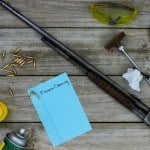
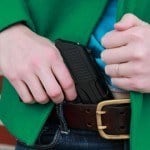
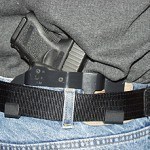
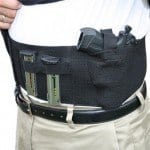
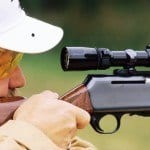
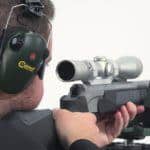
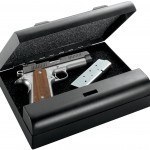
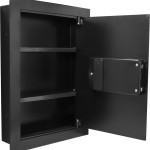


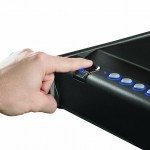
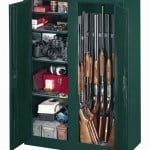
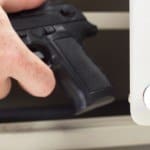
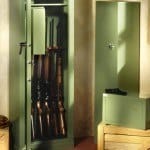
Leave a Reply